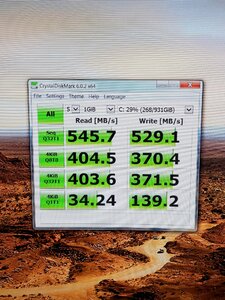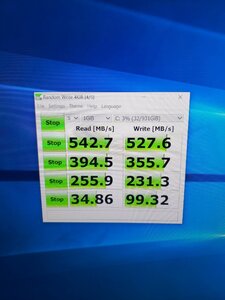Subzerok11
Gawd
- Joined
- Aug 13, 2014
- Messages
- 550
So I upgraded my rig so now it's got a 9600K + z390 Asus Strix-E. My old system was 2500K + Asus P8P67. Also I'm using the same Samsung SSD EVO 850 1TB. I uploaded screen pics and you can easily see the one on the left is somewhat faster. I'm sure in day to day usage I wouldn't noticed but still shouldn't it be maybe slightly faster or at the very least the same ? I used the same Sata cable and the drive is also set at AHCI.
Now if you guys think the speed is still within a normal range, then so be it but I got to know.
Now if you guys think the speed is still within a normal range, then so be it but I got to know.
Attachments
Last edited:
![[H]ard|Forum](/styles/hardforum/xenforo/logo_dark.png)

